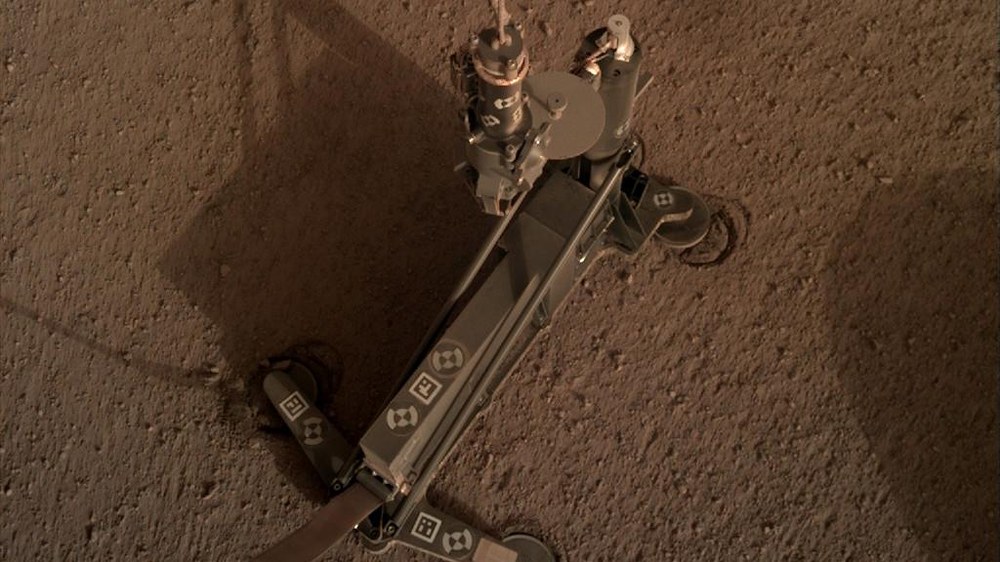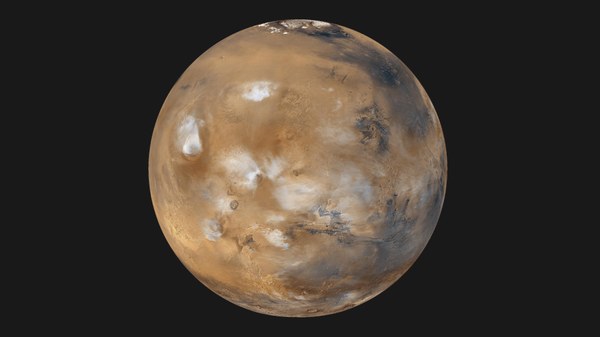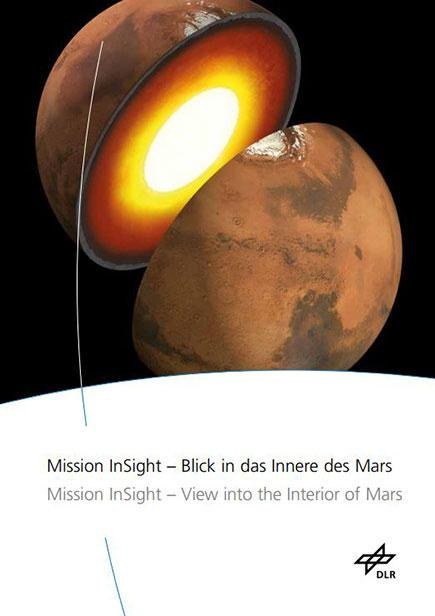InSight
Insight | |
|---|---|
Launch | 5 May 2018 at 13:05 CEST (04:05 PDT) |
Launch site | Vandenberg Air Force Base, California, USA |
Launch vehicle | Atlas V-401 (flight number AV-078) |
Height | 57.3 metres |
Launch weight | 333 tonnes (launch vehicle and InSight payload) |
Upper stage | Centaur with re-ignitable RL10-C engine |
Propellants | Thermally-stable kerosene (type RP-1) and liquid oxygen (launch vehicle); liquid hydrogen and oxygen (upper stage) |
Mission duration | A little over one Mars year (about two Earth years); 708 sols (Mars days) or 728 Earth days |
Ground stations | 34-metre and 70-metre antennas belonging to the NASA Deep Space Network (California, Australia, Spain) |
Data | |
|---|---|
August 2012 | US space agency NASA approves InSight as the twelfth mission in its Discovery programme |
5 May 2018 13:05 CEST (04:05 PDT) |
Launch of InSight to Mars. Distance from Earth to Mars on 5 May 2018: 121 million kilometres. Distance to be covered from Earth to Mars (elliptical Hohmann transfer orbit): 485 million kilometres. |
26 November 2018 20:52 CET | Landing of InSight on Mars. Planned landing site: Elysium Planitia at 4.5 degrees North, 135.9 degrees East |
Late 2020 | End of mission (nominal), extended to December 2022 |
InSight-lander | |
|---|---|
Mission control centre | Jet Propulsion Laboratory (JPL), Pasadena (Mission) Mission: NASA Jet Propulsion Laboratory (JPL), Pasadena
HP3 interior heat experiments: German Aerospace Center (Deutsches Zentrum für Luft- und Raumfahrt; DLR) Microgravity User Support Centre (MUSC), Cologne)
SEIS seismometer: French space agency (CNES), Toulouse |
InSight dimensions | Height: between 83 and 108 centimetres (compression of the legs can only be determined after landing)
Width with unfolded solar panels: 6 metres |
InSight mass (with transfer stage) | 360 kilograms (727 kilograms) |
Mass of scientific payload for InSight | 50 kilograms |
Mass of solar panels | Two panels, each 2.15 metres in diameter, with a total area of approximately seven square metres |
Energy supply / generation from solar panels | On a clear day, both solar panels will generate a total of 600–700 watts. On a day when there is dust in the atmosphere, it is assumed that they will generate 200–300 watts, even if the solar panels are covered in dust. |
Communications | Via the Mars Reconnaissance Orbiter (MRO) and 2001 Mars Odyssey |
Experiments | |
|---|---|
Heat Flow and Physical Properties Package (HP3 pronounced ‘H-P cubed’) | First determination of the amount of heat emanating from the planet’s interior by measuring the temperature from the surface down to a depth of 5 metres and measuring the thermal conductivity. The DLR Institute of Planetary Research (today the DLR Institute of Space Research) led the development of the experiment. An infrared radiometer for determining the temperature of the surface of Mars forms part of the experiment. |
Seismic Experiment for Interior Structure (SEIS) | Seismometer for measuring ground movements on Mars at different frequencies using six sensors, three short period sensors (SPS) and three very broadband sensors (VBB). The instrument was developed by a consortium led by the French space agency (CNES). Germany provided the levelling system (LVL), which was developed and built at the Max Planck Institute for Solar System Research in Göttingen. |
Rotation and Interior Structure Experiment (RISE) | RISE records the shift in the frequencies of radio communications (Doppler effect) in order to measure tiny fluctuations in the inclination of Mars’ axis of rotation, indicating uneven distributions of mass within the planet and the state of its core. |














